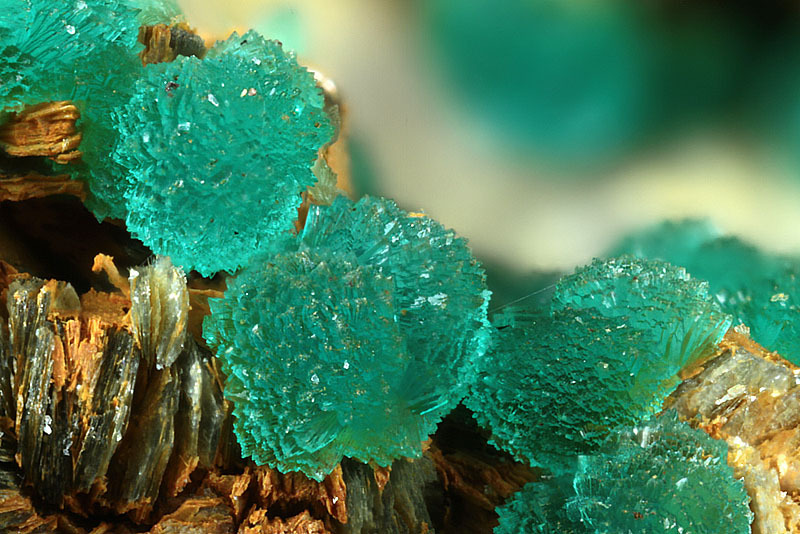Do you picture turquoise as a shade of blue or more of a green when you think of the color? Many people adore this lovely hue, which is produced when you combine blue and green. There are countless variations of turquoise; for instance, consider the vivid turquoise ocean in a tropical setting. Naturally, many hues of turquoise are linked to peace and tranquility. If you’ve been considering using turquoise paint to accent a wall in your house, you may also be wondering what colors make turquoise, as well as how to create aqua or teal. You can find all the information you need about the gorgeous and numerous shades of turquoise in the guide that follows!
Table of Contents
What Color To Make Turquoise?
Creating a pale, genuine shade of turquoise can be achieved by using a formula of Blue + Green + White. You should have a lovely shade of cyan after combining the blue and the green. Then, until you achieve the desired level of turquoise, gradually blend in small amounts of white. Typically, a 2:1 ratio of blue to green should be used as the foundation of your turquoise formula. Using this technique, you can easily give your turquoise with a lot of blue more intensity.
The second formula for making custom turquoise is Blue + Yellow. By using this formula, you can subtly tint blue paint yellow. To achieve the most vibrant and realistic turquoise, try to aim for a white-to-blue ratio of 1:6.
A Short History Of Turquoise
Let’s learn a little bit more about how to mix blue and green color shades before we discuss what colors make turquoise and other information about turquoise paint. The word “turquoise” is quite an old one. As a matter of fact, it dates back to the seventeenth century! It is actually the French word for “Turkish”. Prior to being mined in Afghanistan and Persia (today’s Iran), turquoise was initially discovered in some regions of Ancient Egypt.
For the Native Americans, turquoise was more than just a stone; it was also a sign of safety. When using a bow and arrow to hunt, the Apaches liked to make sure they always had a piece of turquoise on them to ensure they had perfect aim. This lovely stone was utilized by the Aztecs in numerous items! Turquoise has a long and illustrious history, and as a result, it is regarded as a symbol of many good things. In addition to protection, it stands for harmony, success, and hope.
Most Popular Shades Of Turquoise
When naming or describing a color, it is frequently arbitrary. Would you describe beige as a traditional color? Beige is often confused with light brown. Similar circumstances apply to turquoise. Many people think of teal as being a variation of turquoise. Aqua blue fits this description as well. If you want to get technical, teal is actually a darker variation of turquoise, whereas aqua is much deeper in blue and contains a hint of green.
You and everyone else have access to a wide range of tools when printing and using computer graphics. Different colors and their levels of red, green, and blue are represented by hex codes. Four colors—cyan, yellow, magenta, and black—are used to print colors; this is referred to as RGB.
Different Color Of Turquoise
1. Blue-green Turquoise
This turquoise has a cyan hue that is much more intense. It still has a calming, peaceful effect. You might find this color in a Crayola crayon box; it is more blue-green. Many things in nature can be found in blue-green turquoise, including lakes and even fish. Consider the damselfish, for instance. A stunning display of turquoise in blue and green! If you’re painting a glacier-like scene, you might want to think about using the hues blue-green, light blue, and some white. Oranges and yellows are the best colors to match if you want the color to stand out and pop.
2. Electric Blue Turquoise
The English began referring to electric blue as a color in the middle of the 1840s. It’s a color that exudes vitality and genuine excitement. It is frequently used in place of a blue that is softer and goes well with white. You can make a palette that is particularly striking to the eye by utilizing other vibrant colors, such as a lovely bright orange-red. Like other turquoise hues, it also mixes in well and complements other blue tones.
3. Turquoise Green
Turquoise green, which is a desaturated shade of cyan-lime green, is a color that’s frequently used to denote calmness and freshness. A desaturated pink is the ideal contrasting hue for this turquoise shade. That said, it also blends beautifully with other muted or desaturated shades of green and blue.
4. Celeste Turquoise
A lighter and paler shade of cyan that is reminiscent of the skies on a hot, sunny summer day. Celeste turquoise is exactly what it sounds like. While the ideal and perfect shade of this tone has changed ever so slightly over the years to become a bit more of a minty color, it is still the perfect “sky blue”.
5. Tiffany Turquoise
Tiffany turquoise first appeared in the middle of the 1980s. The hue was developed for the jewelry packaging of Charles Lewis Tiffany. The hue was appropriately dubbed Tiffany blue as it rose to fame and became more well-known. This shade of turquoise is a good choice if you’re going to class. Coral, yellow, and deeper blues are other colors that go well with it.
6. Light Sea Green Turquoise
The turquoise color is obviously ocean-inspired, being a darker cyan and light sea green. More green than blue can be found in this shade. A dark, desaturated red or even white makes it stand out beautifully. It will blend well with a deeper shade of cyan-lime green or dark blue.
7. Catalina Turquoise
A darker, more subdued cyan hue characterizes Catalina turquoise. It is symbolic of thoughtfulness, serenity, and calmness as are most shades of blue. This color goes well with other muted dark blues or greens as well as a muted dark red.
8. Teal Turquoise
The rule of the day is calmness and clarity, especially when it comes to teal. connected to water and the outdoors. This color looks lovely when contrasted with deep maroon or other green hues to create sophisticated, lovely contrast.
How To Mix Turquoise Paint?
Picking a turquoise color paint straight away is probably the simplest course of action when learning what two colors make turquoise and how to mix the various tones of turquoise paint, be it muted or bright turquoise. However, if you want to learn how to make your own turquoise paint, continue reading. You might want to slightly alter that color.

Tips For Getting The Right Shade Of Turquoise
1. Choose A Hue
The colored pigments that are visible to our eyes are referred to as hue. So hue refers to the primary and secondary colors red, orange, yellow, green, blue, and violet, but not too mixed colors or white or black. The only component that actually creates pure color is hue.
Since turquoise falls on the spectrum between blue and green, you can adjust the hues of blue and green you use to achieve the perfect shade of turquoise for you.
To achieve the precise shade of turquoise you desire, you can also choose blues and greens that range from cooler to warmer shades. Warmer shades of blue and green produce a warmer turquoise, while cooler shades of blue and green produce a cooler turquoise.
2. Consider Darkness And Light
“Value” refers to the relative level of lightness or darkness of a color. Lighter colors, like light sea green, typically translate as being lighter and calmer because more white has been added to make them appear that way. By altering the value to include more white, you can probably replicate a light turquoise color in a painting you’ve seen. For a more subdued shade of turquoise, yellow can also be added in small amounts along with blue and green.
More black has been added to darker values, which tend to feel more menacing. You can add black to darken turquoise, but it’s far more common to add darker shades of blue or green to achieve a darker value. By incorporating deeper blues or greens, it is possible to create darker turquoise shades like midnight green and polished turquoise.
Therefore, think about beginning with a darker blue or green base color if you want to achieve a darker, more vivid shade of turquoise.
3. Adjust The Saturation
“Saturation” refers to the intensity of color in a hue in relation to the amount of white or black. Color becomes more saturated or intense when less white or black is added. You should increase the saturation if you want a vivid turquoise or aquamarine, for instance.
Less saturated colors will typically have higher additions of white or black. Add less white if you want a color with more saturation. While pure turquoise and turquoise blue have a higher saturation than hues like icy teal and pale turquoise, the latter two have a lower saturation.
You have a ton of genuine inspiration to draw from when creating your own unique turquoise shades because turquoise is a color that is based on a natural stone. Additionally, it implies that you have a great deal of freedom to choose any one of the many different natural examples of turquoise that can be found all over the world as the basis for your own turquoise creation. When you want to uplift the mood and increase positivity in whatever work of art you’re creating, bright, highly spiritual turquoise is a great color to include. It is highly prized in fashion, décor, and the arts.



